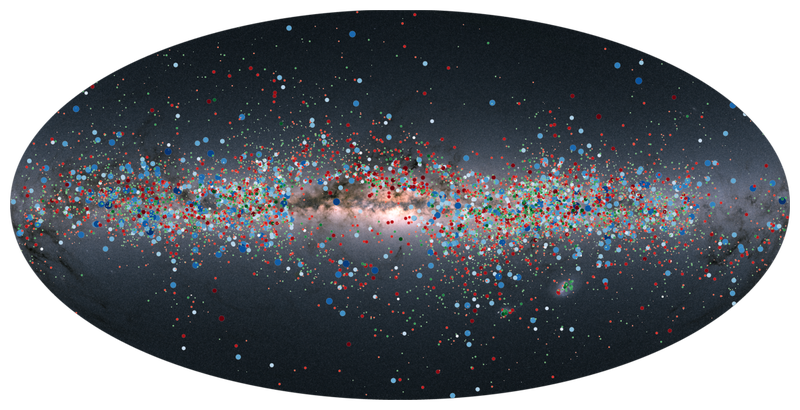The latest data release from the European Space Agency’s Gaia observatory just dropped, and it’s a massive one: the spacecraft has identified half a million stars in a nearby cluster, nearly 400 gravitational lenses, and the orbits of some 156,000-odd asteroids.
This outpouring of science is part of the observatory’s third data release, the first part of which came out in June 2022. Gaia has been in space since December 2013, and is positioned in a region called L2, the same area that the Webb Space Telescope calls home.
“With the new data we can study the cluster’s structure, how the constituent stars are distributed, how they’re moving, and more, creating a complete large-scale map of Omega Centauri,” said Alexey Mints, a member of the Gaia Collaboration and the Leibniz-Institute for Astrophysics Potsdam, in an ESA release. “It’s using Gaia to its full potential – we’ve deployed this amazing cosmic tool at maximum power.”
The half a million newly spotted stars were just a handful of the north-of-1.8-million on which data was collected in the recent set of observations. The stars are in Omega Centauri, the largest globular cluster visible from Earth, a roughly 150-light-year-wide group of stars that is 17,000 light-years from Earth.
The newly spotted stars are fainter than many of those previously detected; Gaia has now seen 10 times more stars in the cluster’s core, and stars 15 times fainter, according to ESA.

The Gaia release is so massive that five research papers comprise its data: one paper describes the half-million newly spotted stars, a second details the variability of the stars; a third unpacks the thousands of asteroids and their orbits; a fourth scrutinises two mapped interstellar bands composed of gas and dust; and a fifth takes a long look at the hundreds of possible gravitational lenses spotted by the observatory.
Gaia also observed over 380 gravitational lenses, or objects in space that bend and focus light from the more distant universe. Gravitational lenses allow astronomers to peer deeper into space, to see ancient galaxies and even clues about the nature of dark matter.
“Thanks to Gaia, we’ve found that some of the objects we see aren’t simply stars, even though they look like them,” said Christine Ducourant, an astrophysicist at the Laboratoire d’Astrophysique de Bordeaux and a member of the collaboration, in the ESA release. “They’re actually really distant lensed quasars – extremely bright, energetic galactic cores powered by black holes.”
Fifty of the 381 quasar candidates are highly likely to be the real deal, Ducourant added, an exciting prospect for astrophysicists hoping to better understand ancient active galactic nuclei.
Observing clusters like Omega Centauri can yield different kinds of useful information, including details of how stars age and how galaxies evolve. Gaia’s fourth data release will include observations of eight more regions of space densely populated by stars. That release will likely not come until 2026, according to ESA. The final data release planned for the mission is its fifth, which will not come before the end of 2030.
